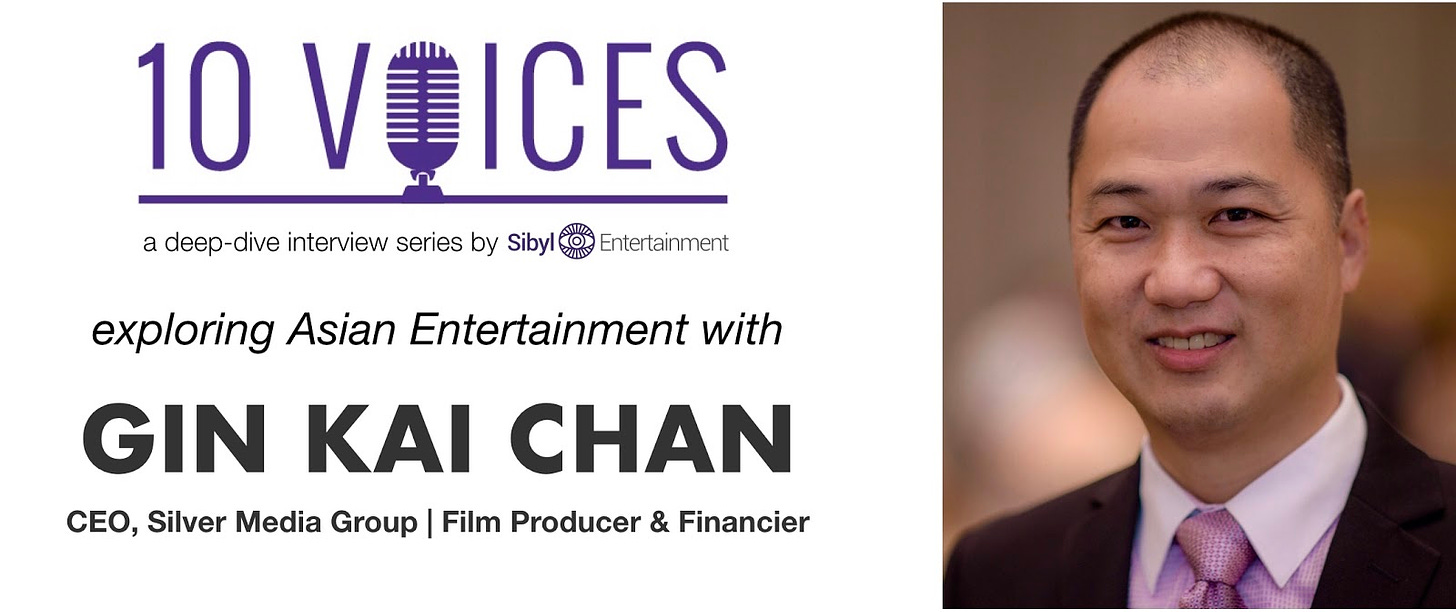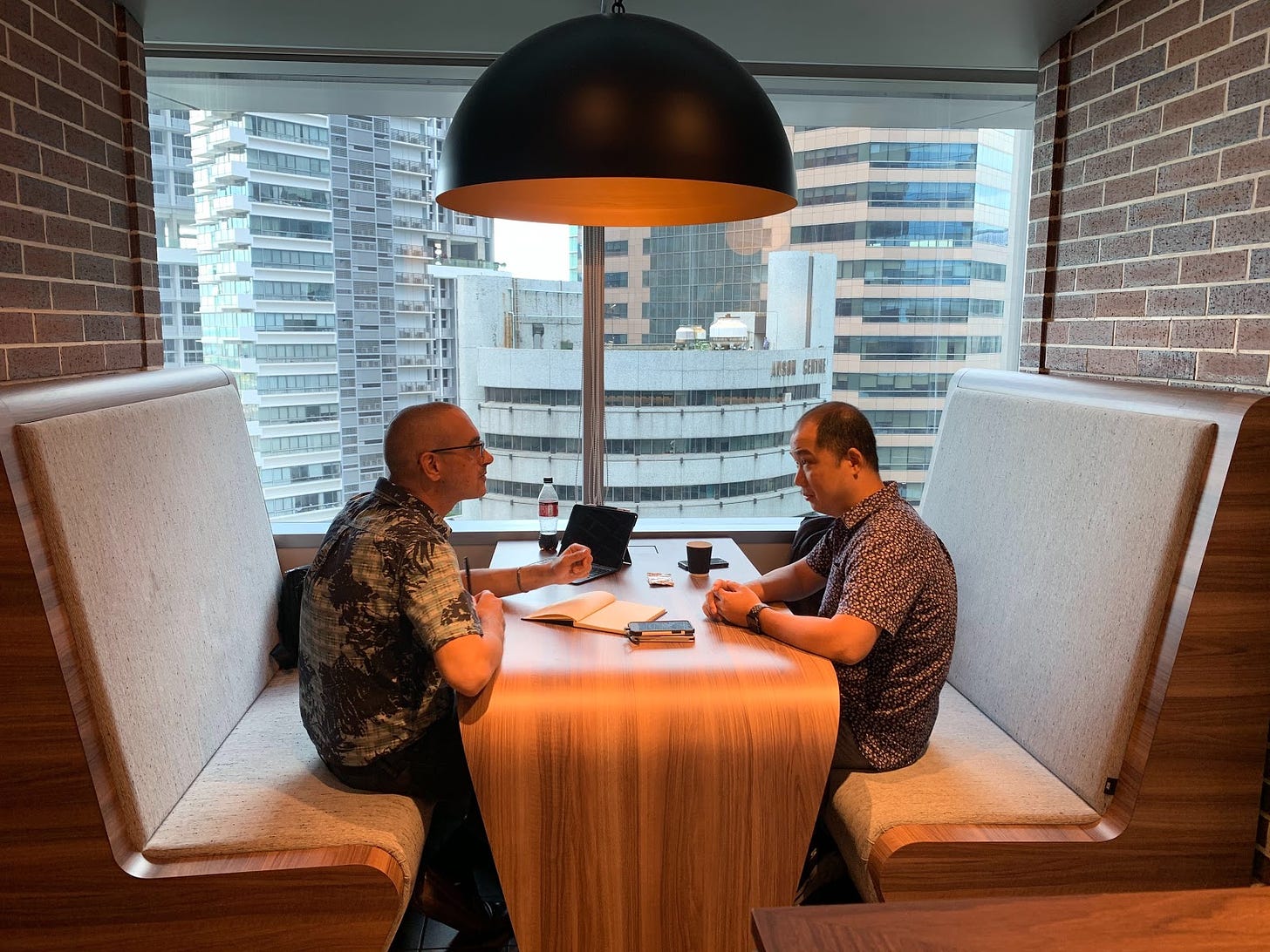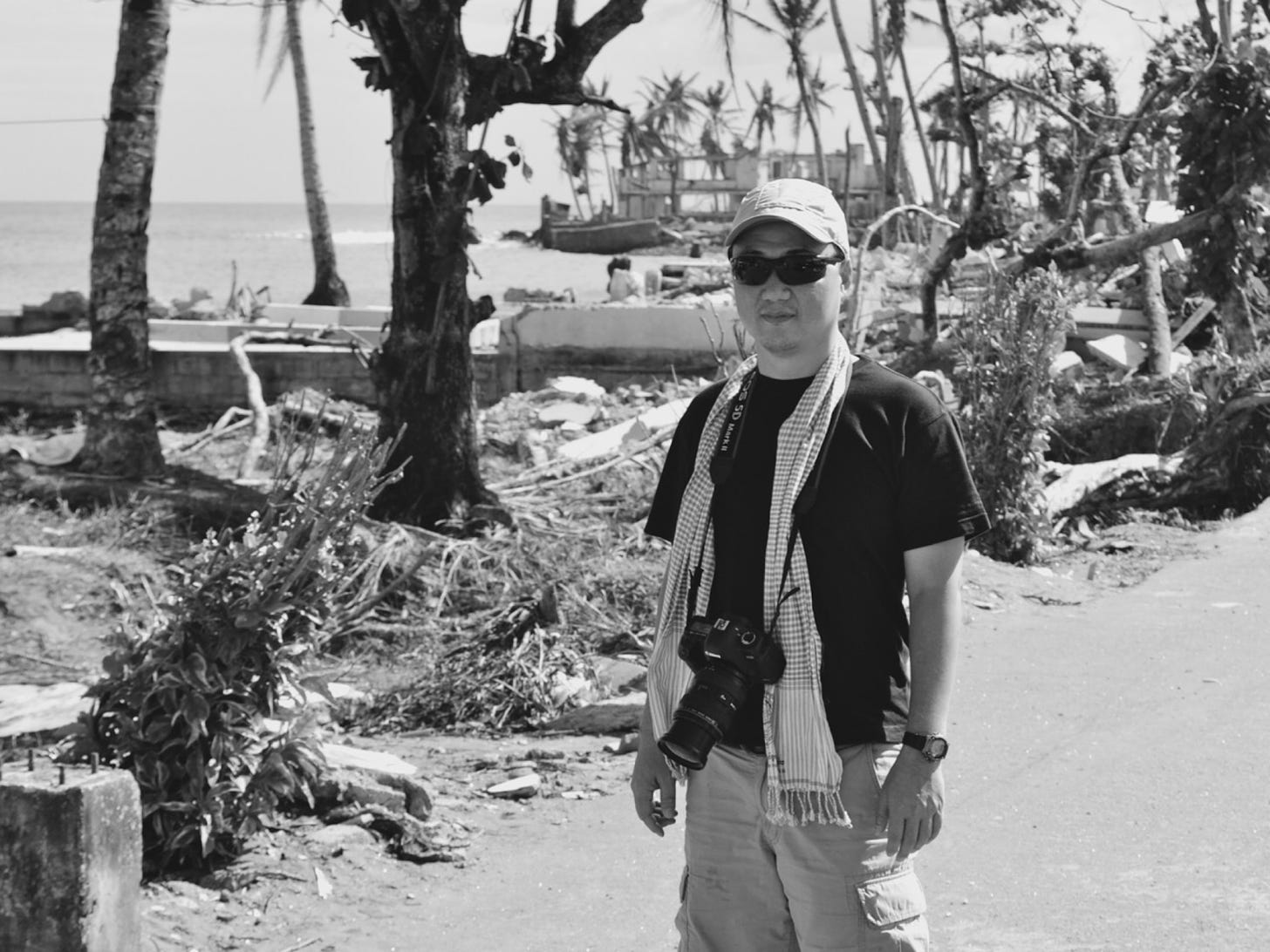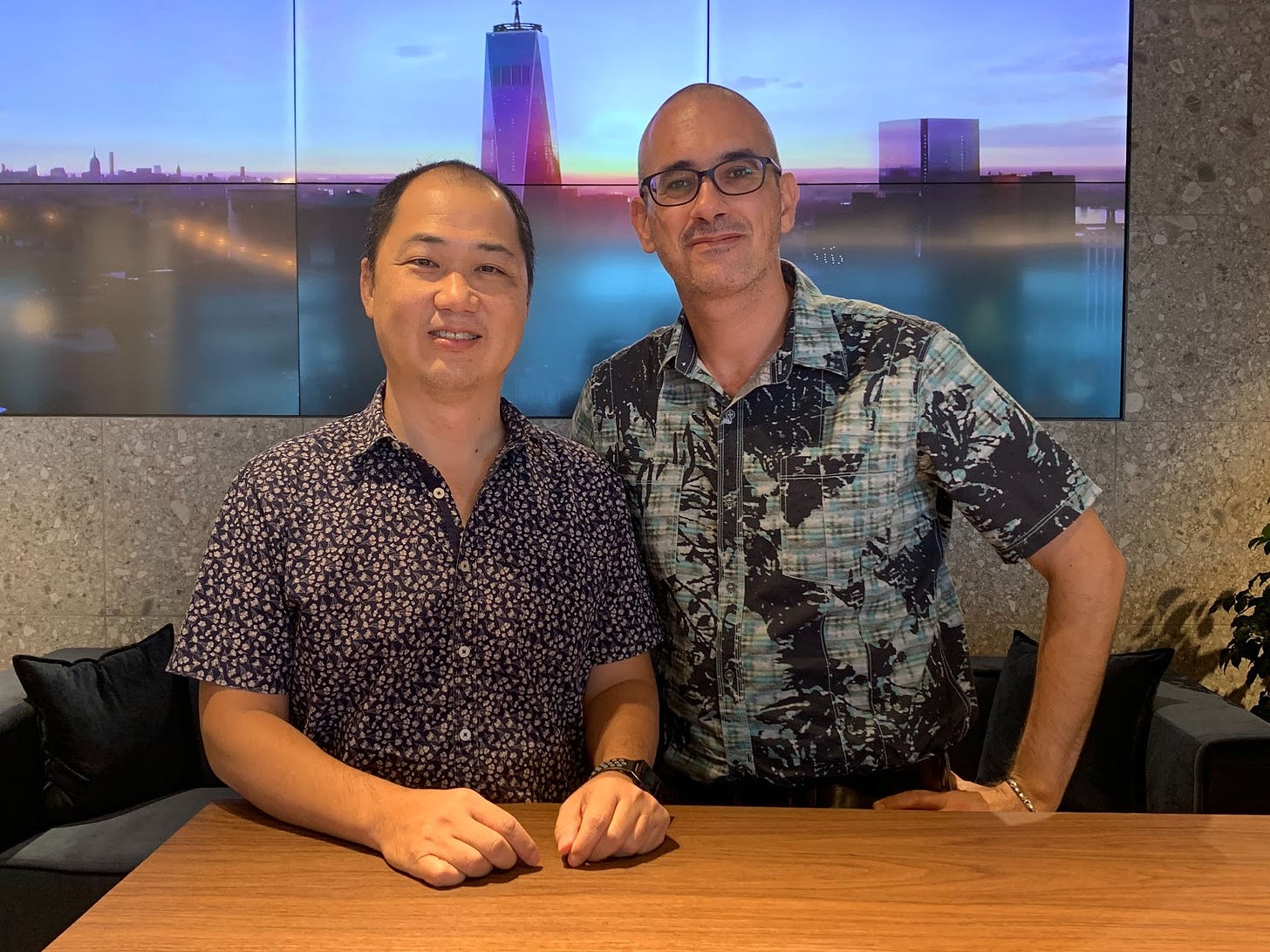10 Voices Interview: Gin Kai Chan | Film Producer & CEO, Silver Media Group
Asian entertainment industry leaders weigh in on the past, present & future.

Gin Kai Chan, CEO of the Silver Media Group, is a stalwart of Southeast Asia’s burgeoning motion picture industry.
Running one of few privately-managed media funds in the region, he’s acted as financier, executive producer, and producer.
Most recently he produced horror flick Eerie, directed by Mikhael Red and shot in the Philippines (available on Netflix). He’s currently juggling production of three new projects in India, the US, and the Philippines.
Gin Kai is the prototypical ecosystem builder. One film, one frame at a time, he’s pushing Southeast Asian cinema forward. Co-founding an association here, organising cross-cultural film festivals there, advising this government and that one. Rallying the community, speaking to aspiring filmmakers, mentoring young producers, and financing high-potential projects with budgets that make sense.
All this while pursuing his own dreams of artistic expression.
The Singaporean producer recently sat down with us at the Sibyl Entertainment office to share his perspectives on where the industry is today, and where we’re headed.

Theo Sanders (L): You’ve now been involved in film & television for 22 years now, starting at a time when things were very different from today. Was this all part of some master plan?
Gin Kai Chan (R): Basically I stumbled into the film industry. Back then, I worked for a church for a couple of years, counseling people. Then I decided, like many other foolish young people, that the thing to do was to open a cafe.
Well, that didn’t go well. While the cafe was still losing money, my partners and I started to ask ourselves “so what are we going to do next?”
We created a company called Upside Down Concepts, doing a little bit of advertising, web design, event management, and filming - whatever work we could get. Eventually, we closed the cafe and also started to streamline the things we did at Upside Down to focus on film. So we started off as a small production company.
So, from serving coffee to film production? Got it…
I had studied accounting and got my Masters in technology management. But there were five of us, and we really wanted to keep the group together. One of the guys was into web development, and another had studied film. Although I enjoyed the creative part of it, and had studied literature, what I did was bring business sense into our new venture.
There’s still quite a big leap from where Silver Media Group and Upside Down Concepts are today.
We started creating content like corporate videos, music videos. Things like that. Eventually that led to creating TV content for the local broadcaster, MediaCorp, and then on to doing projects for Discovery, Animal Planet, and CNBC.
But I always had a feeling that we had to look beyond Singapore. We’re such a small country. From a storyteller’s point of view, from a commercial point of view, you want to reach as many eyeballs as possible. This all led to us being one of the pioneers of co-productions. We started working with teams in Australia, India, Indonesia, South Korea, and Sweden among others.
So the idea of co-production was not conventional wisdom at the time?
I knew we had to find a way to bring the “business” into creative business.
As we started doing a lot of co-productions. We were learning through making mistakes and knocking our heads against the wall. But it was a good process, because this pioneering stage charted the way for future co-productions. Not a lot of companies were doing this at the time.
How did that process lead you to the kind of projects you’re working on today?
About ten years ago, I turned 40. I’m 50 this year. When there’s a zero behind your age, you ask yourself, “what am I gonna do with my life?”
Those are introspective milestones for a lot of us. They kinda make you question, “is this right?”
You’re right. It’s the thought of “what am I gonna do for the rest of my life?”
When I turned 40, I decided I didn’t want to be at the bottom of the food chain anymore. That’s where production businesses really are. I wanted to be more involved in creative development and on the producing - not the production - side of things.

Eerie (2018)
Since then I’ve done a lot more producing and co-productions, and have also put together financing for different projects. It makes more sense if you look at where Singapore is now. As a production base we don’t make sense. We’re too expensive and - Singaporeans are gonna hate hearing this - we’re not as strong creatively as other countries.
We make sense as a hub for intellectual property and financing, not as a production base. People trust our practices, our rule of law, and our international exposure. So that’s what I’ve worked towards the past 10 years. But I also decided that, instead of just looking far away, to look at our hinterlands. I do some projects further afield, but my focus has been places like Vietnam, Indonesia, and the Philippines.
Is that changing? Is the younger generation becoming more creative?
Well, I think we are more internationally-exposed. As for being more creative... I think we need a while more, though it’s definitely better than ten years ago. It’s our education system.
We’re a lot more familiar with how stories are told in other countries. It doesn’t mean we are able to tell better stories, but at least we understand more.
There’s a saying that “constraints breed creativity.” Are countries like Thailand, Indonesia, and the Philippines more creative because they have so little? It’s a more visceral, raw life in those places.
Yes, definitely. I remember a long time ago arguing with someone in my company because he was spending thousands to create an opening 20-second sequence of a film.
We were buying these huge rubber balls, a few thousand dollars worth. He said, “no, no, Gin Kai, you just don’t understand creativity.”
I told him it was because he had so much money to spend, he was taking the easy route. He could’ve easily animated that or shot it another way. If you don’t work under constraints, you won’t think outside the box.
But I think it’s also the lack of life experiences. Someone in Singapore might be writing a story about poverty. We read about it. We can think about it. But we don’t live it.
Real poverty is a pretty abstract concept for most people in Singapore.
I remember talking to a friend of mine in the Philippines. He was telling me how his uncle was murdered, and later his cousin was murdered. This is the kind of thing we only read about in the newspaper here.

Coming back to co-productions, why are you an advocate for the model?
We saw these happening elsewhere, but not so much in Southeast Asia. Thailand has always managed to export some of its best films, but not the rest of us.
We were always making a lot of excuses for ourselves. “In Southeast Asia, we don’t understand each others’ languages. But we don’t understand Korean either, and we’re watching Korean films.”
We had a lack of infrastructure to bring our best stories out. And this kind of mindset in Southeast Asia of, “we’re not as good.” It was self-imposed resistance.
None of that is true. Korea has amazing films, but they make a lot of bad films too, and so does the US. But through co-productions our good films are now getting the exposure they need.
The quality bar really has been raised hasn’t it?
Southeast Asian films have been winning a lot of awards at international film festivals. The Philippines and Singapore always have someone winning them. Indonesia and Vietnam win a few. Even Cambodia, though they don’t produce many films.
In terms of critical acclaim, there’s been a lot of people winning at the arthouse festivals. But in terms of commercial viability, a lot of films in the region are only making money in their own domestic market. But not in Singapore.
Did the domestic market prop up the film industry in a lot of these places? To what extent did that set back the international exposure?
In these (Southeast Asian) countries, they do have a lot of films that make money. Of course some flop too, but their domestic film industries have been going on for decades. So there’s a sustainable economic model.
With an international co-production, you’re not gonna double or triple your money. But you’ll make an extra margin of 10, 20, or 30 percent, and that can make a big difference as part of your business model. And there’s the long-term part to it: the whole exchange of ideas, and skills being broadened. That’s how I started looking at it.
How has the emergence of OTT (ed: over-the-top, streaming) changed things for Asian films on the world stage?
Before, we had to convince people to read subtitles, now everyone reads them.
I see it as competition and exposure. It’s very difficult for local TV to improve by leaps and bounds. And I think that's because of how it is funded in the first place. It's funded by government money.
It seems like that would would create a lot of risk aversion.
By nature it does because as a public service program there are certain messages that you need to tell. That’s the kind of content that you have to produce.
Just like Sesame Street, the goal is for things to be done a certain way and to impart a certain message. Singapore content that is funded that way will have the same restriction. You can be as creative as you want, but it will still be Sesame Street.
But I think we have grown and done better technically. How to tell the same story in many ways, but the message of the story will always be the same. You can’t do anything more that pushes the edge in terms of storytelling. Something like Parasite would be very hard to make here.
HOOQ announced a series called She’s a Terrorist and I Love Her. I just can't imagine MediaCorp making that show. Is this the opportunity for filmmakers who want to push boundaries?
Yeah. In fact that's how HOOQ wants to differentiate themselves from local TV, doing things MediaCorp can’t. I can see how a lot of people will prefer working with HOOQ.
Is it fair to say that global audiences are not necessarily seeking themselves in films anymore? Is it the audiences that have shifted, or did the industry simply not understand what people were ready to watch?
People are aspirational. It’s just that what they aspire to has changed.
It used to be that people in Asia had the American Dream. While some still do, certain things have changed and have made America less popular. Asians are now discovering their own aspirations and success.
And what audiences globally are aspiring to is a more egalitarian society. That’s what Wonder Woman, Black Panther, and Crazy Rich Asians are all about. People aspire to inclusiveness.

(Crazy Rich Asians)
From my perspective, after World War II what Asian countries most aspired to was economic development. Thousands of years of culture were sort of “set aside” as dreams of prosperity were pursued. But now that it’s been achieved, it’s almost like Asia is starting to rediscover its roots?
Correct. I think we see it throughout history. Before the Renaissance in Europe, the economy grew, and then the arts followed. It was the same in the US, with rapid economic growth leading to Hollywood. And when I was a teenager, J-Wave came along with Japan’s economic growth.
Something I find interesting about K-Wave today, is that it’s not just film. It’s been this whole... package… of pop music, fashion, cosmetics, and all these other cultural things moving in tandem, influencing each other. And Japanese cultural exports are the same. It’s not just the anime, but all the Japanese ideas of kawaii, and the tidiness, and the need for perfection coming along with it. The Japanese are quirky.
Yea, right. The Japanese were exporting cars and electronics and doing really well just as J-Wave started happening.
And now K-Wave is the same thing with Korean cars, and electronics like Samsung all growing at the same time. All this economic growth probably happened just a little bit ahead, a few years ahead of this cultural growth. We’re seeing the same thing happening right now in China.
The trickier thing about exporting our culture in Southeast Asia, is that we have many cultures. What is Southeast Asian culture?

If you look at the whole SE Asian film ecosystem today, which parts are ready for the global stage?
I think technical production skills are very competent in this part of the world, for the “normal” kind of films. Of course if we’re talking about $300M films with huge CGI budgets, we don’t have the skillset for films like that yet. That said, a lot of the CGI sweat work is done in Southeast Asia. So I think we are in a very good place in terms of that part of the value chain.
And on the financing side of things?
Most of Southeast Asia is starting to look outside. In Indonesia, Philippines, and Thailand, the industry has always been dominated by a few families. Some of those families get their companies publicly listed, but they still control the whole media industry.
The thinking used to be, “I’m making tons of money in my own country, so why do I need to look outside?” But they’re starting to see the need for that as other people are starting to import films.
The result is an erosion of the domestic box office versus the international box office. Singapore has always had international films be a bigger percentage of the box office. But in other countries, the domestic box office is a bigger percentage of the gross. So that is eroding, and they realize they can’t just sit there at home as international competition enters their market. It’s an encouraging sign for co-productions.
And with that decision, now they’re wanting to learn best practices to make this happen. And most importantly, the kind of storytelling that’s needed. Understanding how certain stories can be just tweaked a little to travel outside. I think the rest will follow (the families). The whole distribution in Southeast Asia will follow.
Looking at the success of Crazy Rich Asians, is what we’re seeing global audiences that want to watch stories that may be alien to them? Like the complex relationships within the multi-generational Asian family structure?
I think I still see a universal story there. The skeleton is universal, the flesh is culturally different. Crazy Rich Asians is a Cinderella story.
Touche. So, which recent production coming from the region has really impressed you?
The biggest recent Thai hit Bad Genius is almost like a high school heist movie. That’s got to be one of my favorite films of the year. (ed. note: Bad Genius has a 100% critical score on Rotten Tomatoes). I think Thailand still has the best storytellers for horror, but also for action and dramas as well.

So, what’s keeping you busy personally these days?
I have an animation project in production, a co-production with India. I’m also in the very early stages of pre-production for an action thriller that’s co-produced with teams in the United States & Philippines. Though I’ll most probably shoot that in Malaysia because of the rebates. And I’m also in advanced development stages of a couple of movies in the Philippines.
Do you still feel as motivated in the entertainment today as when you started 22 years ago?
Yeah. I’m more motivated now. When I was 40, I almost left the industry while wondering what to do. But once I figured that out, with the producing and creative development, I’m really enjoying it a lot. And I also see that I have a way to give back to the industry. That always makes a big difference. So I’m enjoying it more now than back then.
Is it fair to say that you're optimistic, but realistic, about the prospects of Southeast Asian entertainment on the global stage over the next five years? That's what I'm hearing from you. That we still have a long way to go.
Yeah. I think there's great potential. I’m realistic because I’m optimistic about it. That's why I want to chart a proper plan and strategy to achieve it. You don’t chart a path forward for things you’re not optimistic about, right?
So definitely very optimistic, but with the understanding that things won't just happen simply because we wish them to.
Outside of this region here, looking at Asia as a whole with everything happening, are we approaching anywhere near “peak Asian culture, globally”?
I would say it's early days. Earlier I was talking about how it's all linked, how the Renaissance is always linked to commercial growth.
It’s Maslow’s Hierarchy of Needs, right. Once your basic needs are met, the rest can happen. So I think if we look at Asia as a whole, there's still quite a way to go in terms of economic growth. Of course China will slow down a little. But “slow down a little” means going from 9% to 5%, so it's still phenomenal growth even if it's 5%.
We tend to talk about Asia as a whole, but then even Kazakhstan is Asia. That's culturally so different, Yes, Asia is huge, and it will grow, but the real question is which regions of Asia are the ones which will be growing?

One last question for you. I’m a young Indonesian or Singaporean, and I dream of telling my stories through film. What advice would you give me?
Get out there to pitch markets.
We always think our own ideas are awesome. But if you’re not selected, ask yourself why. Is it because you’re not the only one out there with this idea? Or is it because other people have better ideas? The exposure helps, and you’ll meet lots of helpful people who are trying to get films made. So write something, and get out there.
Also we can’t be arrogant about our talent. There’s always a bigger talent somewhere else. But sometimes it’s just about getting the opportunities. There have been people without the right talent, but with the right opportunities, that do well. Don’t stick your head in the clouds, go out there and look for those opportunities.
Oh, and avoid errant producers. There are a lot of errant producers!
Thank you, Gin Kai! I’m looking forward to seeing your new projects. We’ll share them with The World Tomorrow readers when they’re out.

Further Reading
Check out the 10 Voices: Asian Entertainment on the World Stage introduction here.
More deep-dive interviews will be published in the coming days & weeks.
The “10 Voices” series needs your support!
If you have colleagues or friends who would enjoy this content, encourage them to subscribe by entering their email address at this link. It’s free. Or use the share button below to help spread the word. We’d appreciate it!



